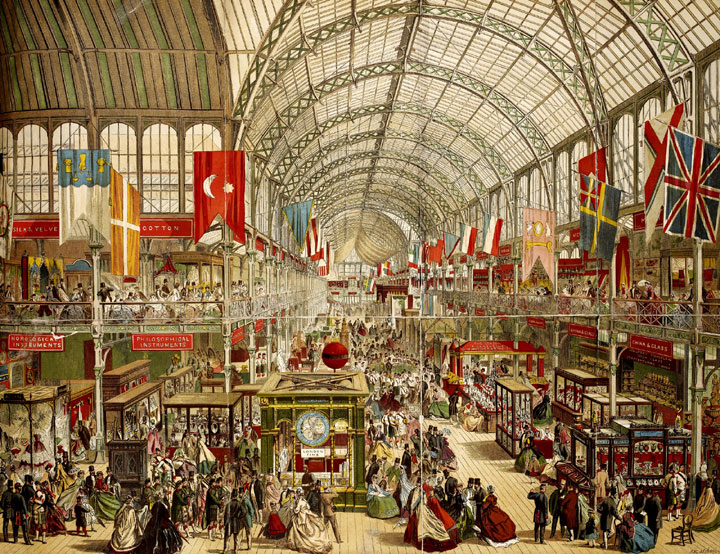The Great Exhibition at Crystal Palace, 1851 Historical Background The Great Exhibition of the Works of Industry of all Nations…
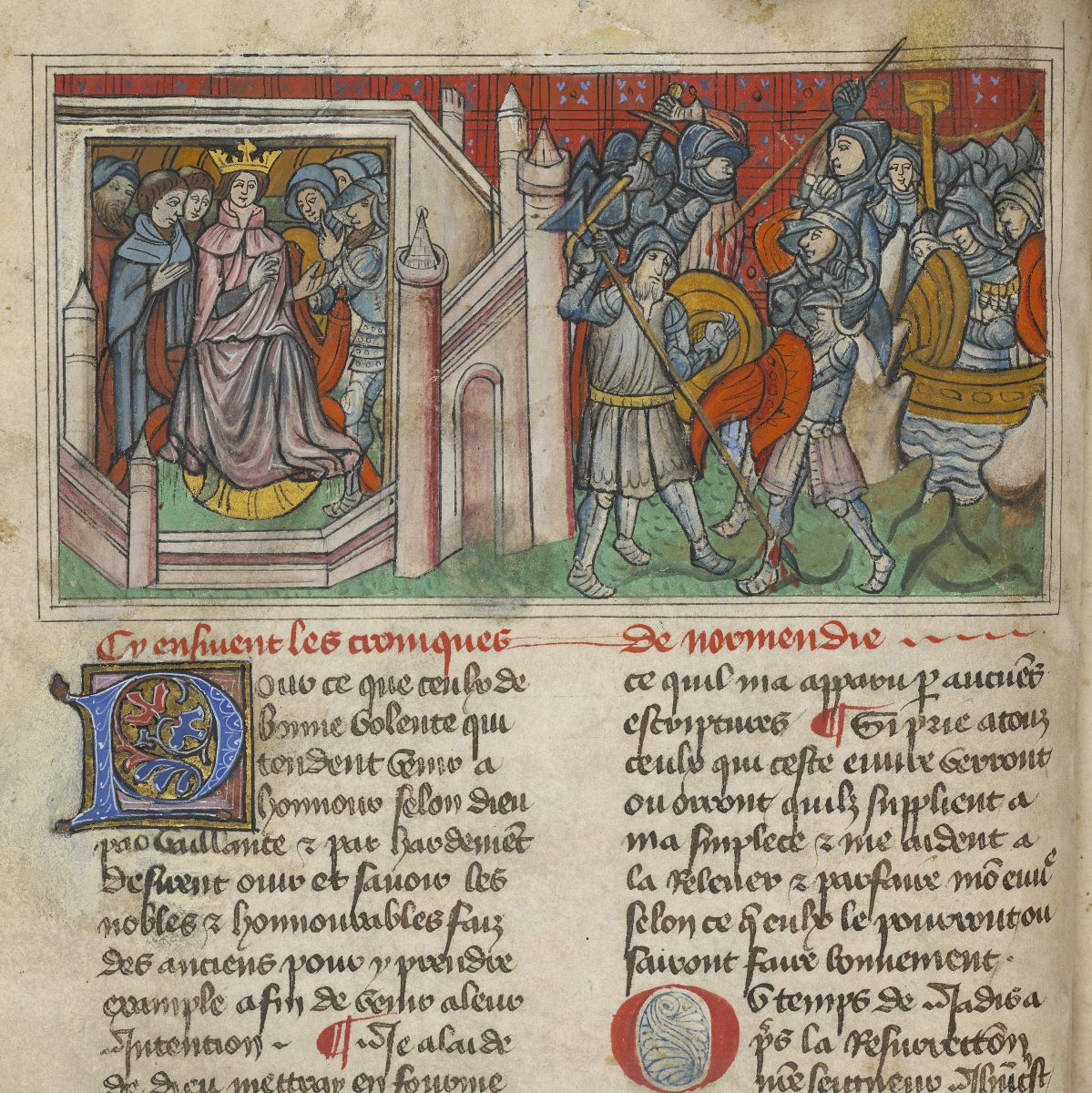
Chronicles of Normandy
The text was written between 1350 and 1370 by an anonymous Norman author, probably from Rouen. This story is based on the Roman de Rou of Wace (1160-1174), as well as on the Chronicle of Normandy of the 13th century. The Chronicle focuses on Norman ducal and royal English characters. It begins in 911 with Rollo, the Viking chief, whom the king of France Charles III the Simple donated the County Rouen in the Treaty of Saint -Clair sur Epte. Depending on the version, the story ends either in 1204, with the annexation of Normandy to the crown of France, or at the latest in 1217 with the accession to the English crown of Henry III , son of John Lackland.
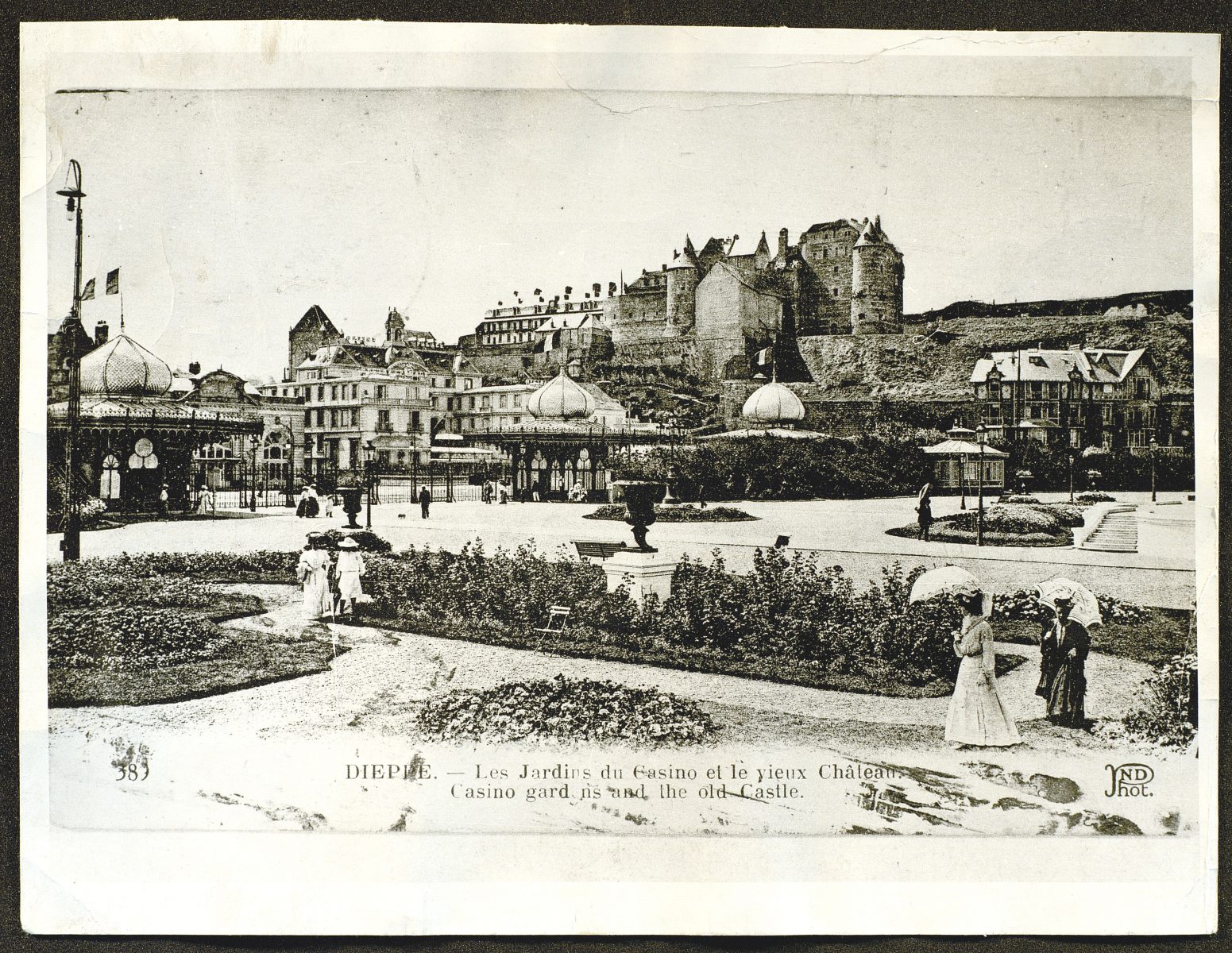
Casino, Old Castle and baths at Dieppe
The first bathing establishment was founded in 1822 by the Earl of Brancas , sub-prefect of the town. This property, surrounded by a garden with its elegant colonnade, is considered the first casino in Dieppe. Marie-Caroline, Duchess of Berry, daughter of King Charles X , attracts people of the court and many artists, such as Rossini, in Dieppe.
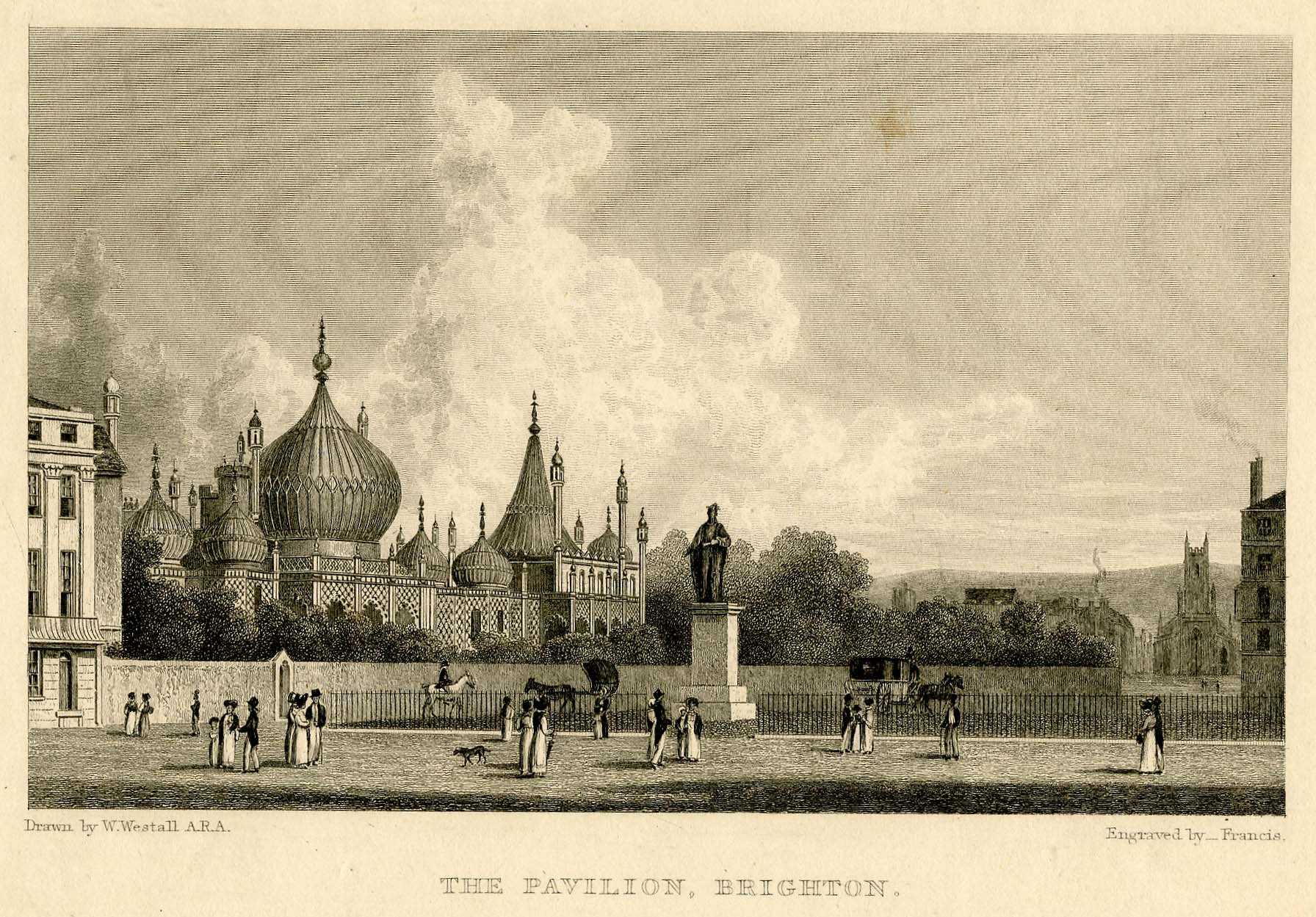
Royal Pavilion at Brighton
Brighton is a town and one of the most famous seaside resorts in England. It was brought into fashion, notably by Albert Abdullah David Sassoon, the “Indian Rothschild” in the 1870s. Among its famous buildings, the extravagant Royal Pavilion raised as a residence for the Prince Regent, later King George IV.
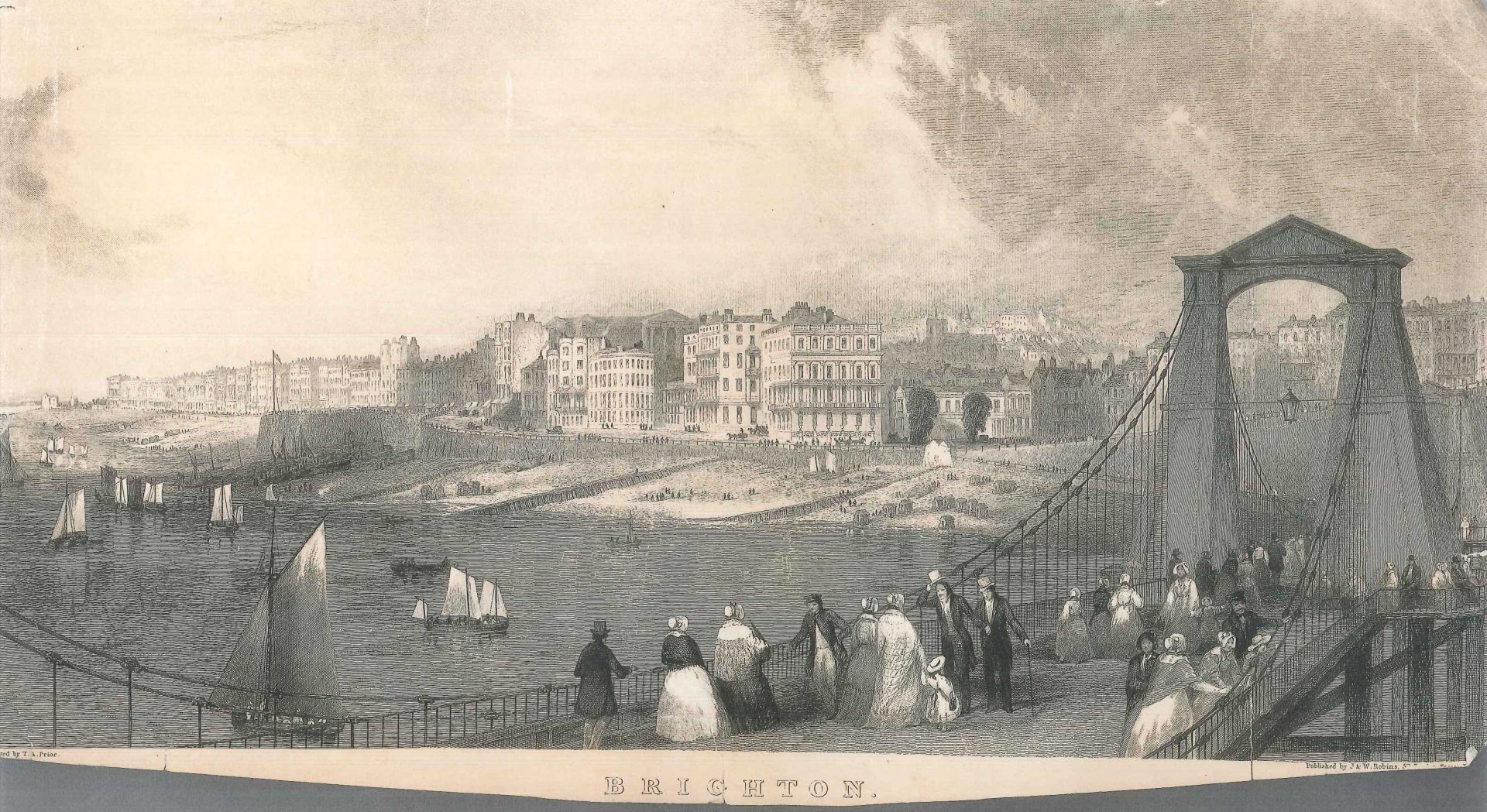
Brighton Chain Pier
The Brighton Chain Pier was opened on 25 November 1823. The pier was primarily intended as a landing stage for packet boats to Dieppe, until they transferred to the more sheltered Newhaven. It was different from typical piers because, rather than being built on stilts, the deck of the pier was suspended from chains attached to pillars
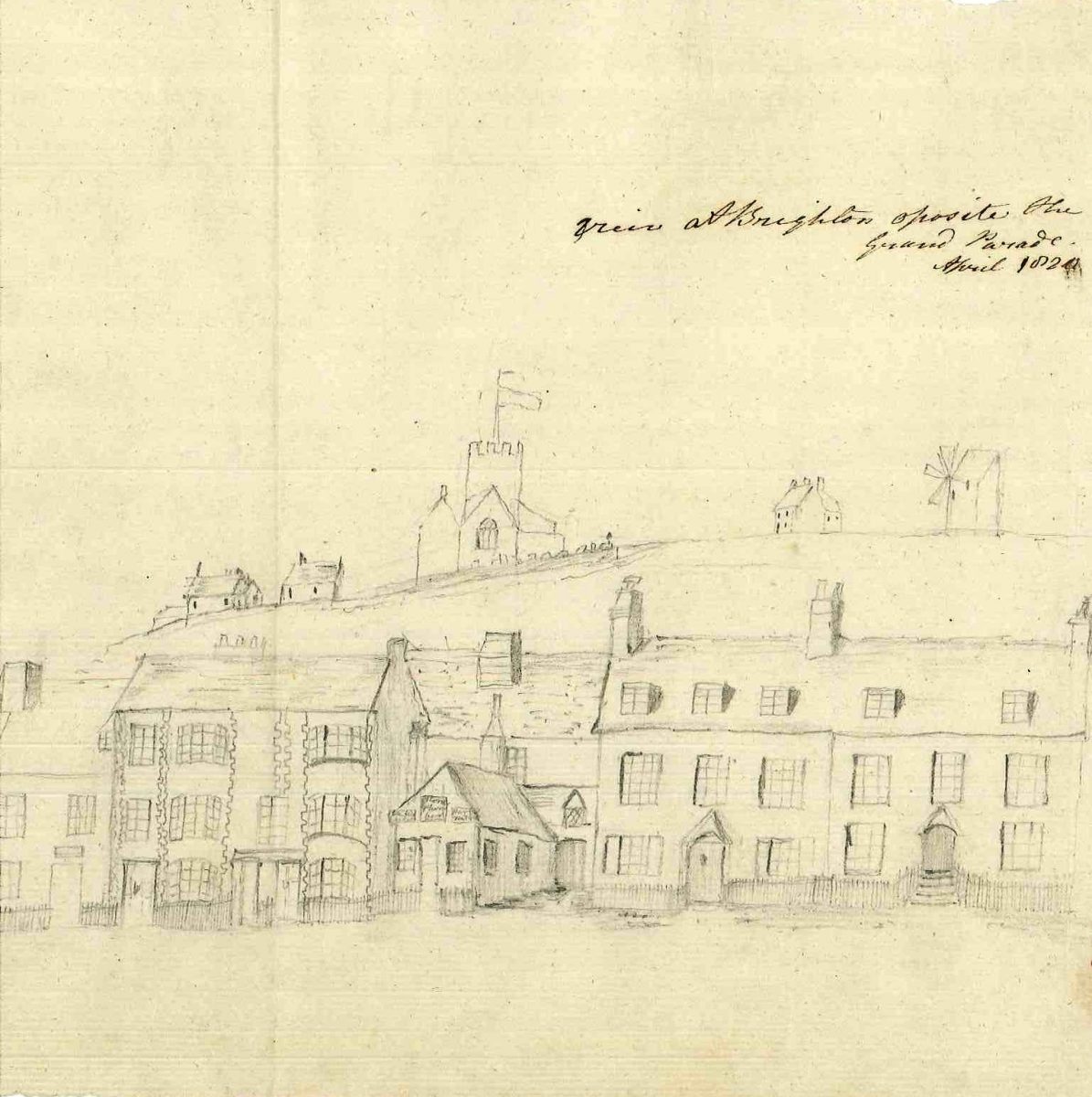
Illustrated diary of Frances Sayer’s visit to Brighton in 1818
Frances Sayer was visiting at a time when Brighton was growing as a bathing resort frequented by the Prince Regent, whose summer palace, the Pavilion, was still under construction.
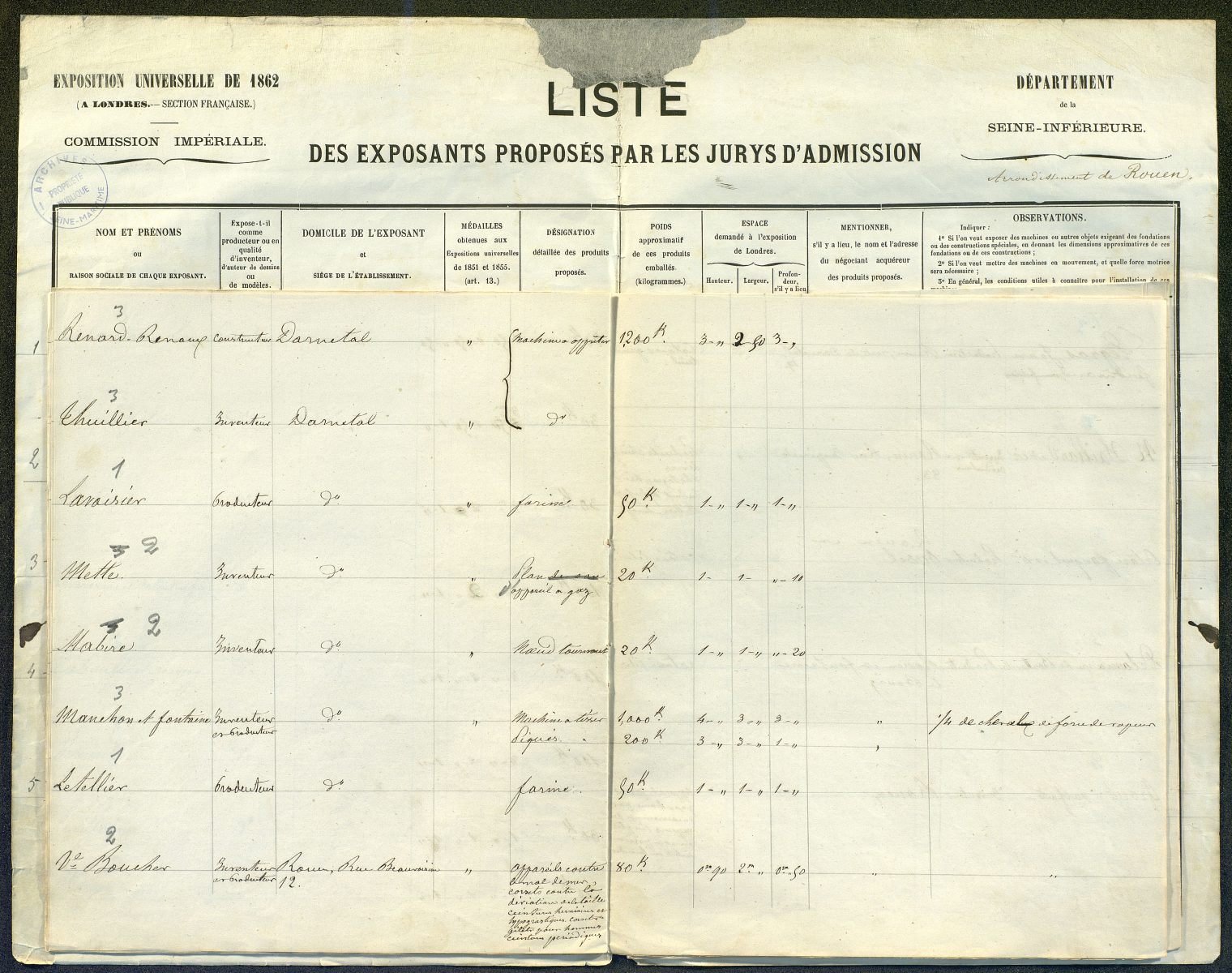
World exhibition in London, 1862
List of participants from Rouen suggested by the admission jury
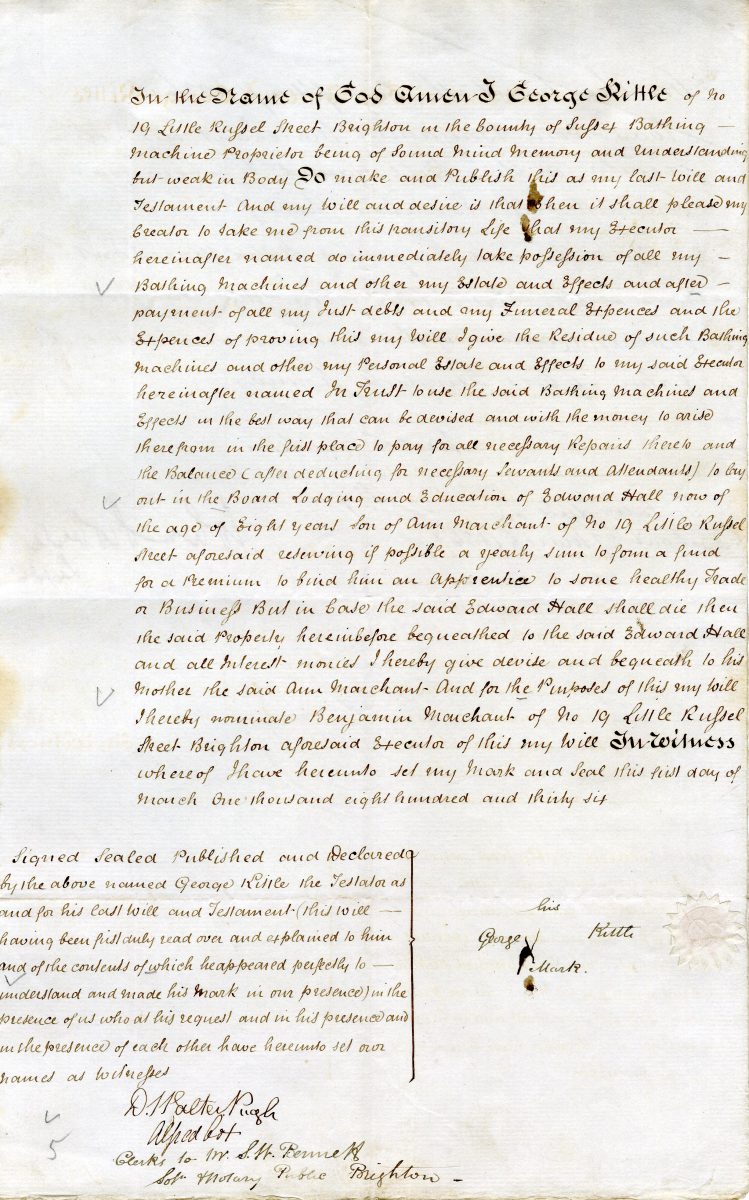
Will of George Kittle, bathing machine proprietor
He leaves his bathing machines in trust to keep them in repair and to pay for the board, lodging and education of Edward Hall, the son of Ann Marchant, who is living at the same Brighton address as Kittle.
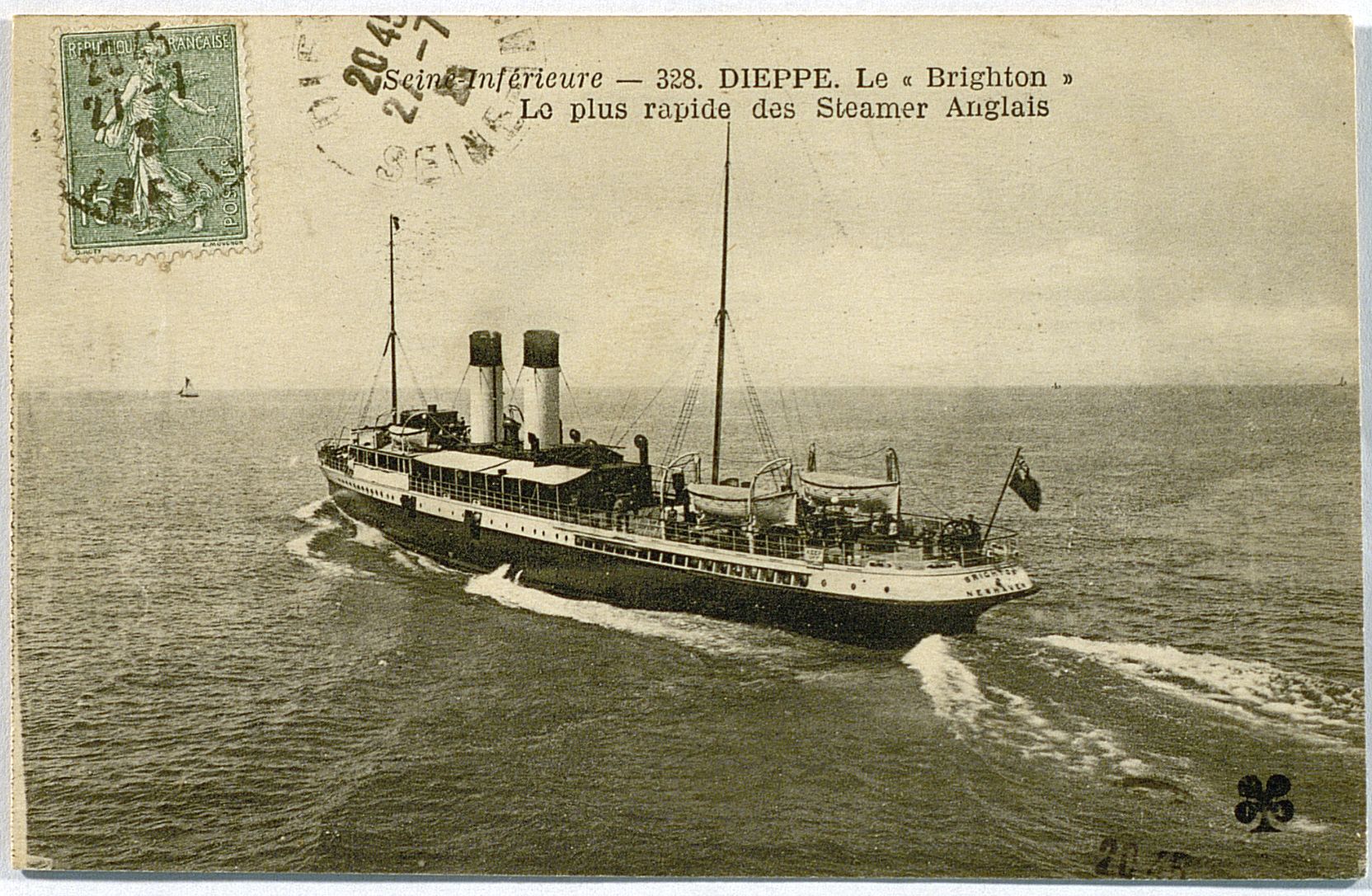
Dieppe, The Newhaven steamer entering port
The « Newhaven » is a French turbine-and-propeller-driven liner.
Built at the Forges et Chantiers de la Méditerranée in Le Havre, taken intoservice in 1911 and modified to run on oil in 1932, it was 92 metres long with a top speed of 24 knots.
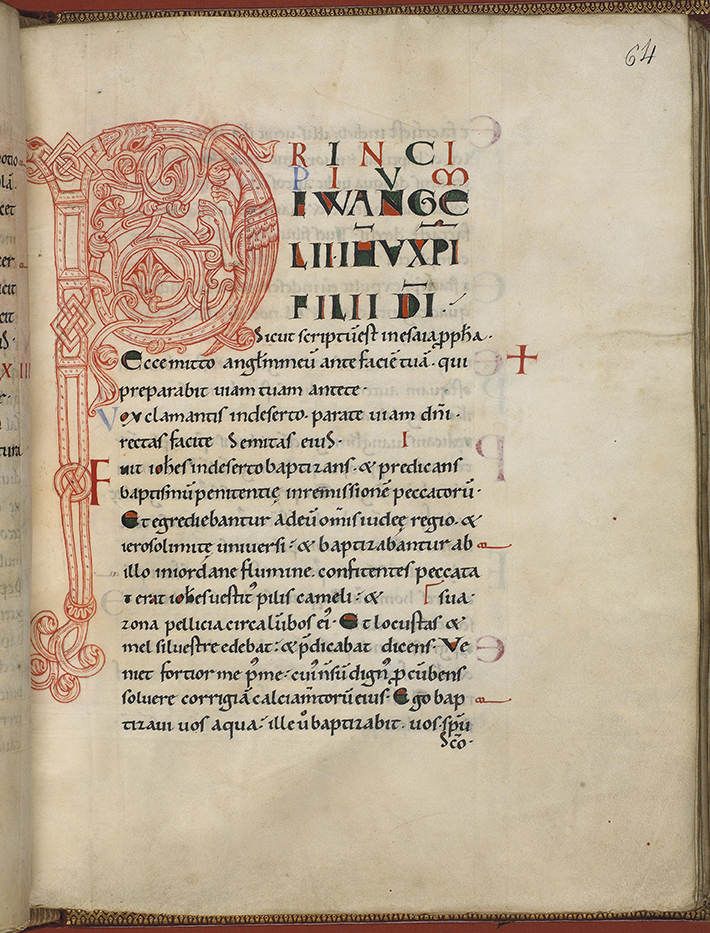
The Gospels of Jumièges
11th century is deeply marked by the appearance of illumination in Norman manuscripts. This is mainly due to the monastic revival and the need for religious communities to build a library. England is so famous for its art schools and its signature style. Several workshops are experiencing significant radiation as those of Canterbury and Winchester.
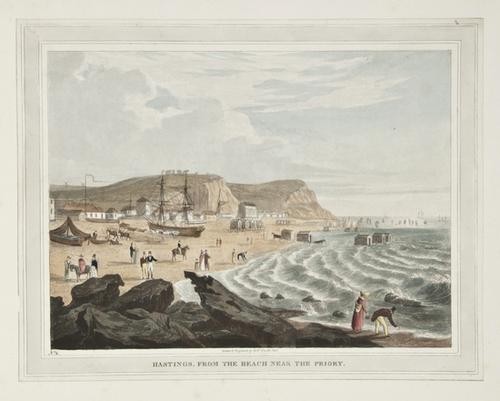
Plan of a bathing machine
Plan of a cheap and simple rolling bathing machine consisting of a light
framework covered with canvas “as used on the coast of France” from the
archives of the Brighton Improvement Commissioners, c 1820s.
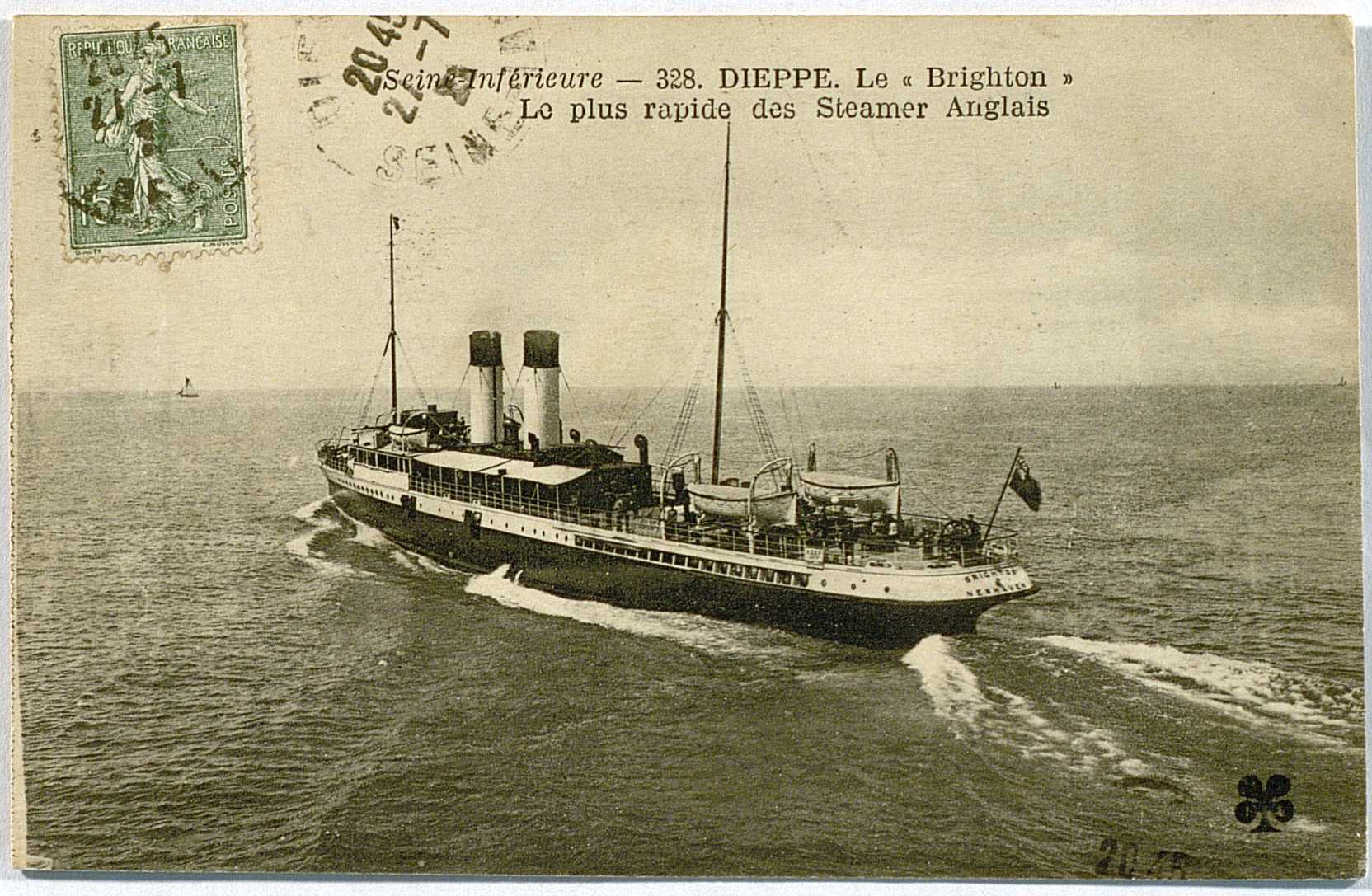
Dieppe, the Brighton, the fastest of the English steamers, postcard
The Brighton, the fourth vessel to bear this name was one of the first turbine-driven liners on the Dieppe-Newhaven route. Built at the Dumbarton shipyard in Scotland, it had two propellers and ran at 6,000 horsepower.
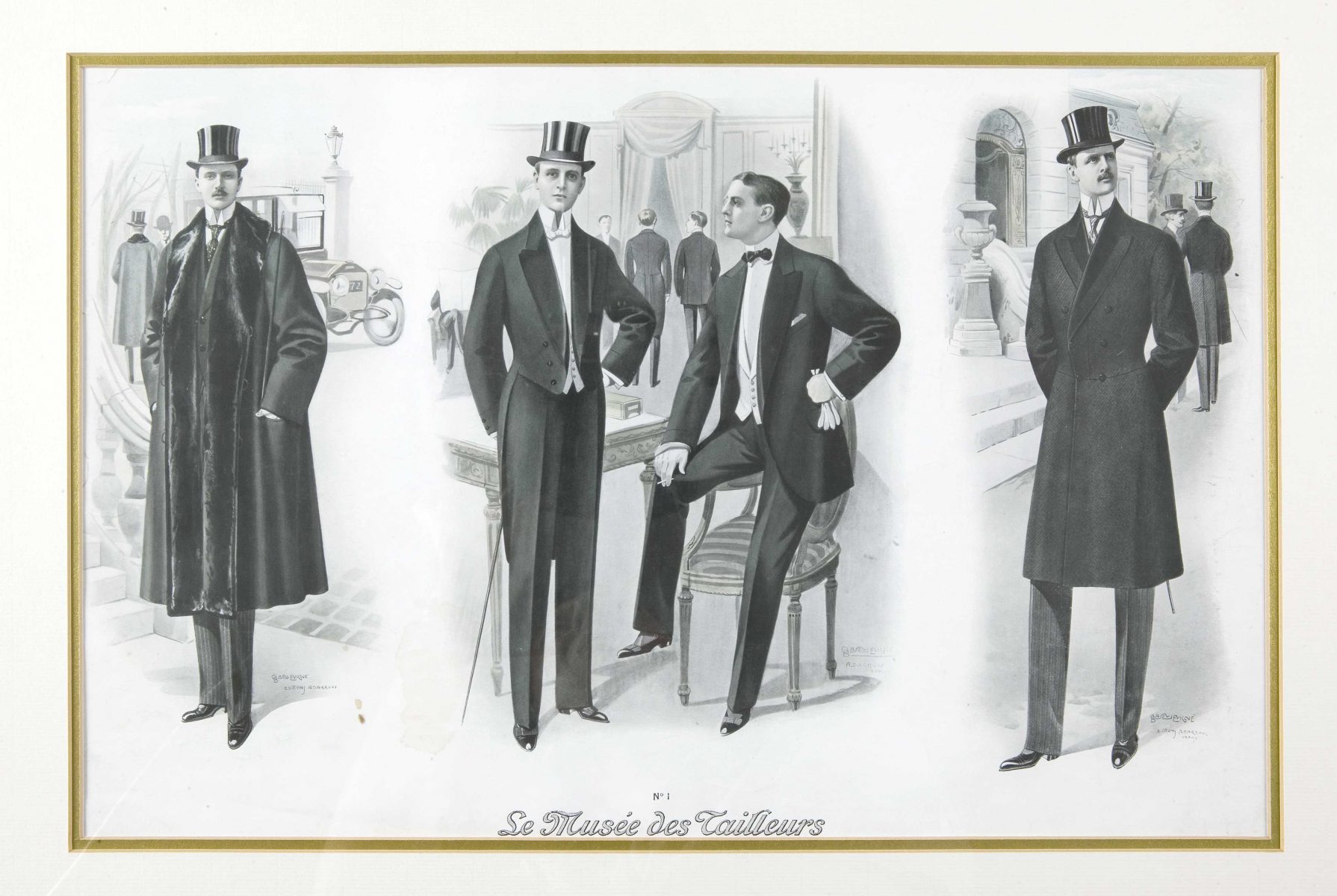
English evening dress: fashion plate from the fashion magazine “Le Musée des Tailleurs”
French male fashion was strongly influenced by England, especially from the nineteenth century onwards.
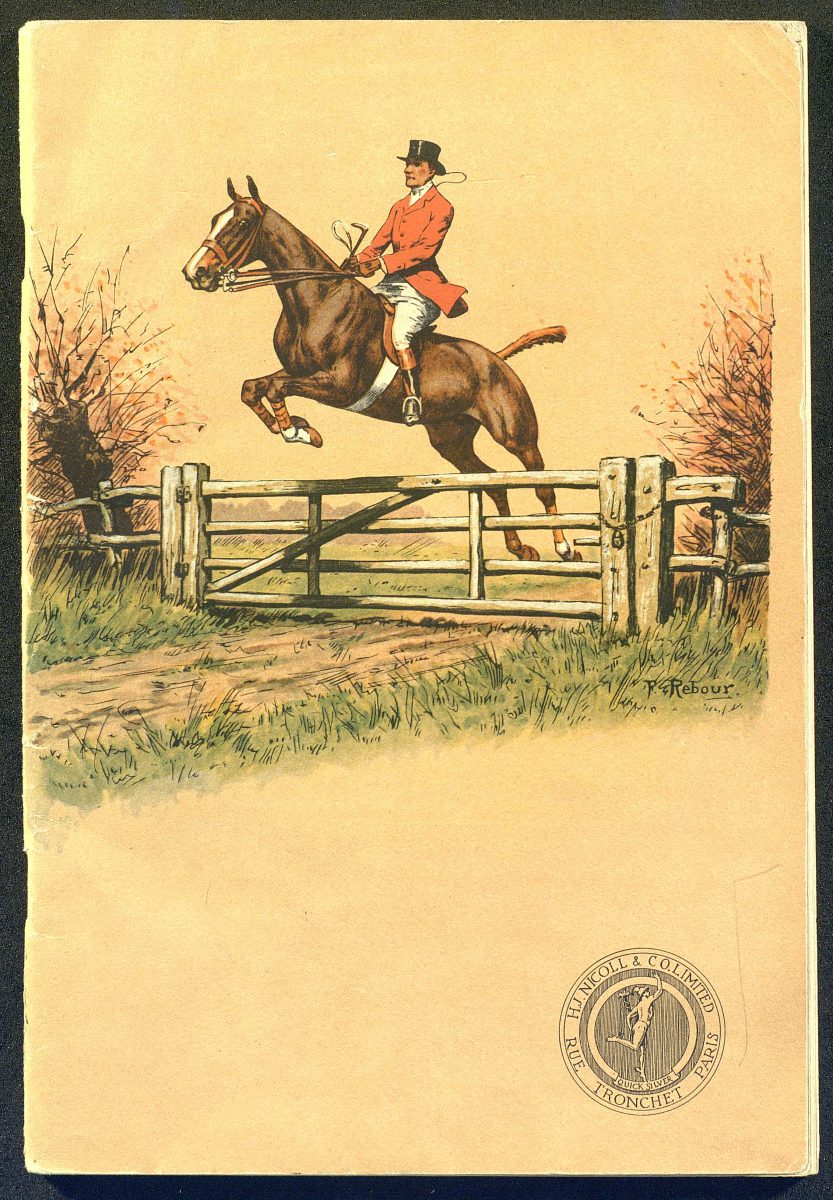
So british ! : “L’Art de bien s’habiller”; “Album des costumes”
Even in clothes made from a particular type of high-quality fabric made in the Normandy town of Elbeuf, “the art of dressing well” was regarded as synonymous with the art of wearing English-style clothes, whether for sports (golf, tennis and horse-racing), in town or on formal occasions.
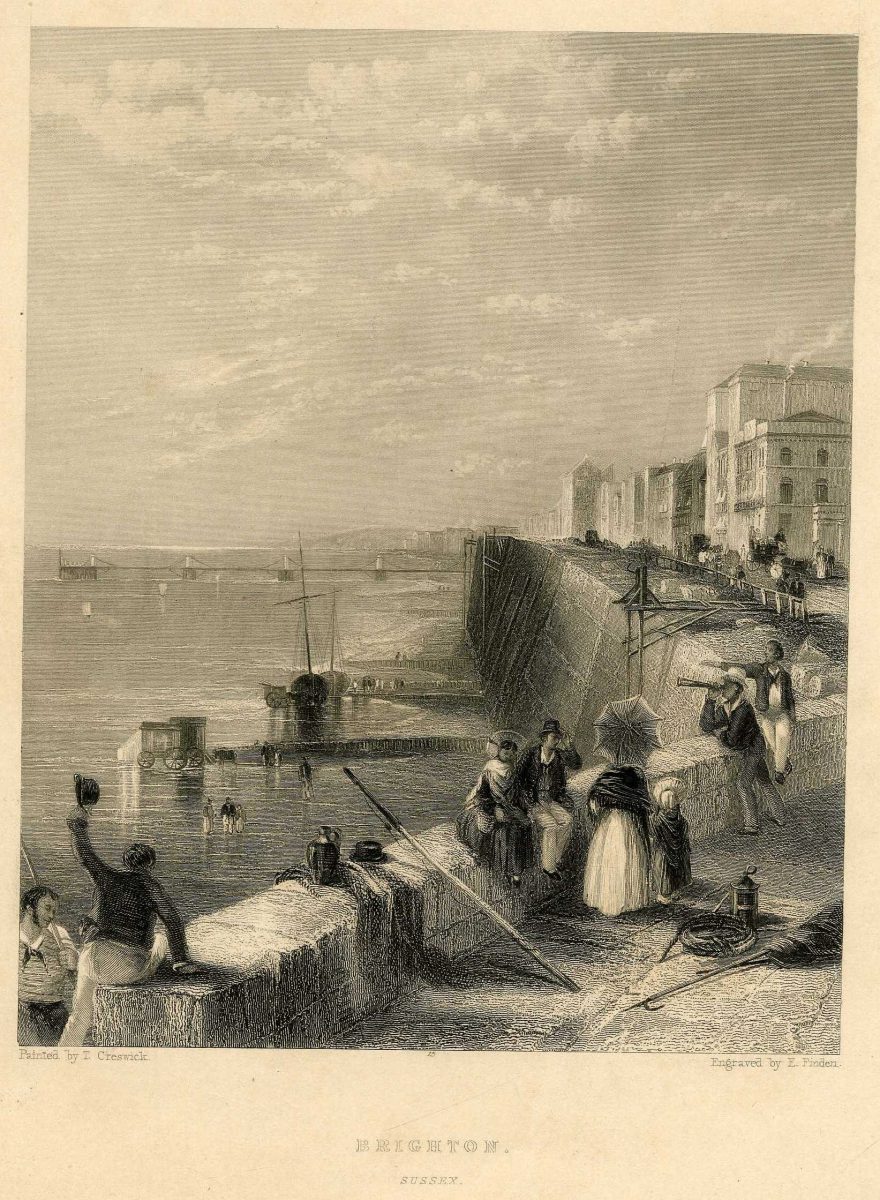
Sketch book of Sussex views
View of the Brighton chain pier. Nothing is known of the artist or the provenance of the sketch book.
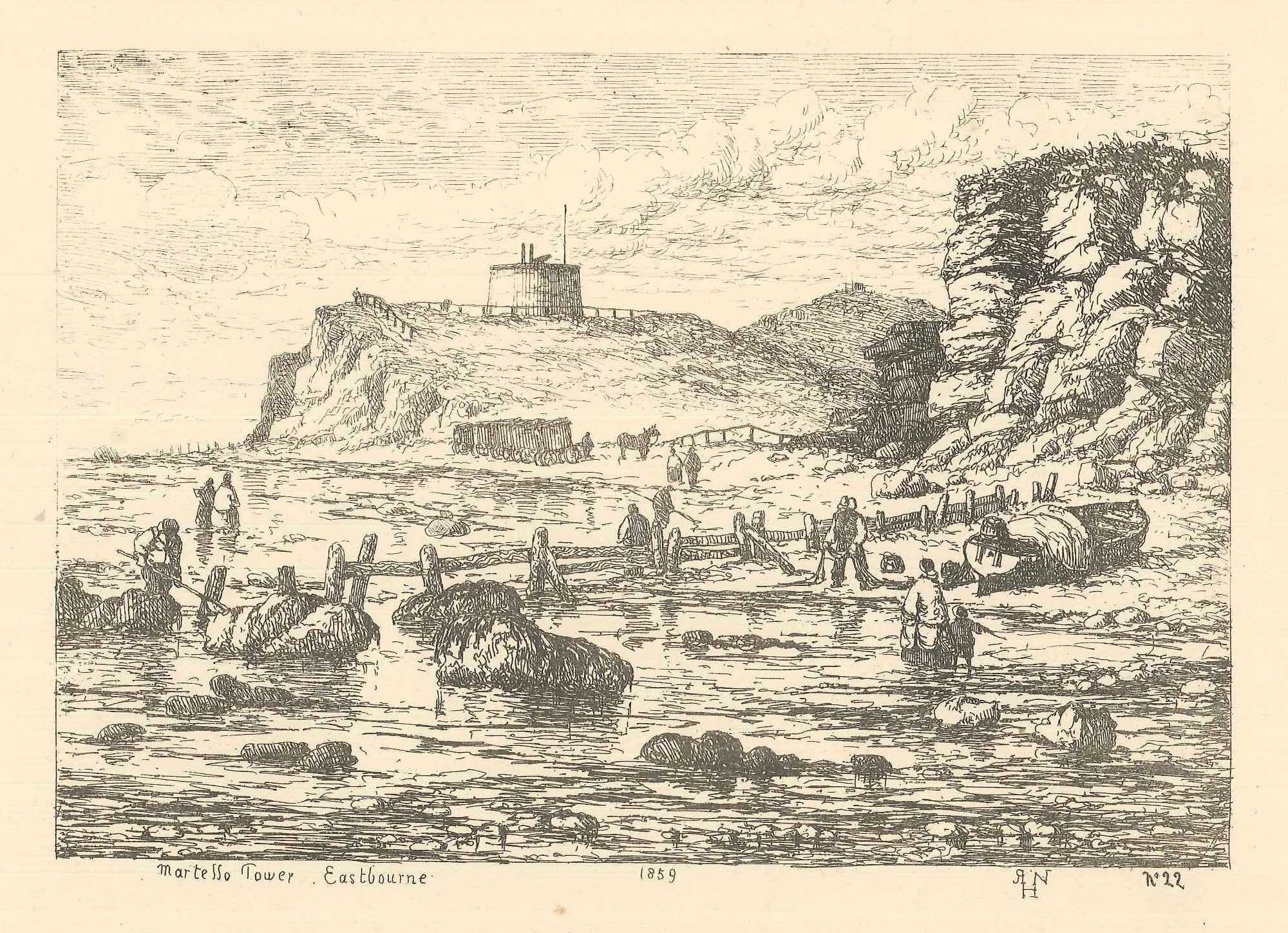
View of Eastbourne, by Henry Nibbs
A view of Eastbourne showing bathing machines on the beach.
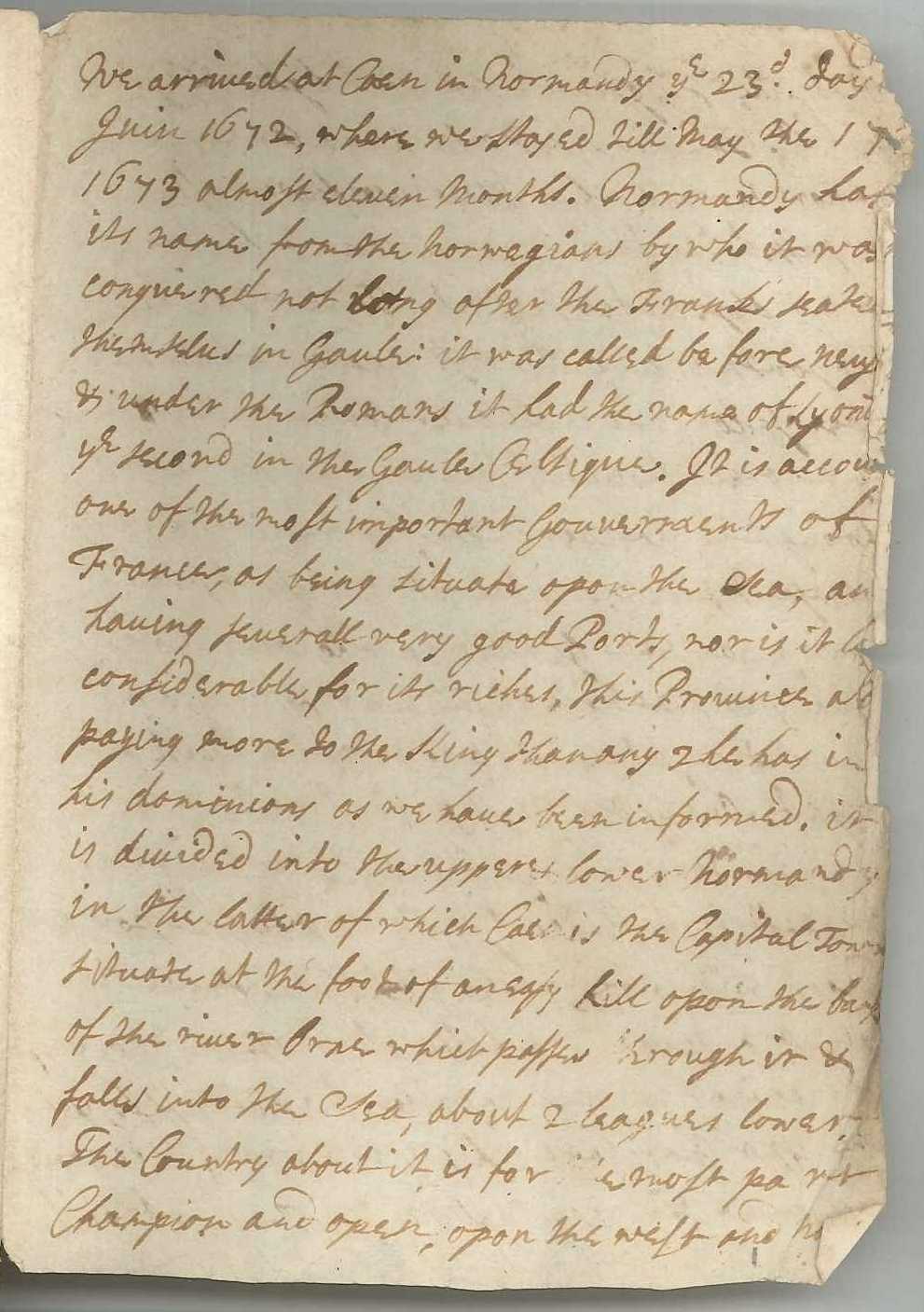
Part of diary probably kept by John Ashburnham
John, afterwards 1st Baron Ashburnham, aged 17 on a ‘Grand Tour’ through France and Switzerland.
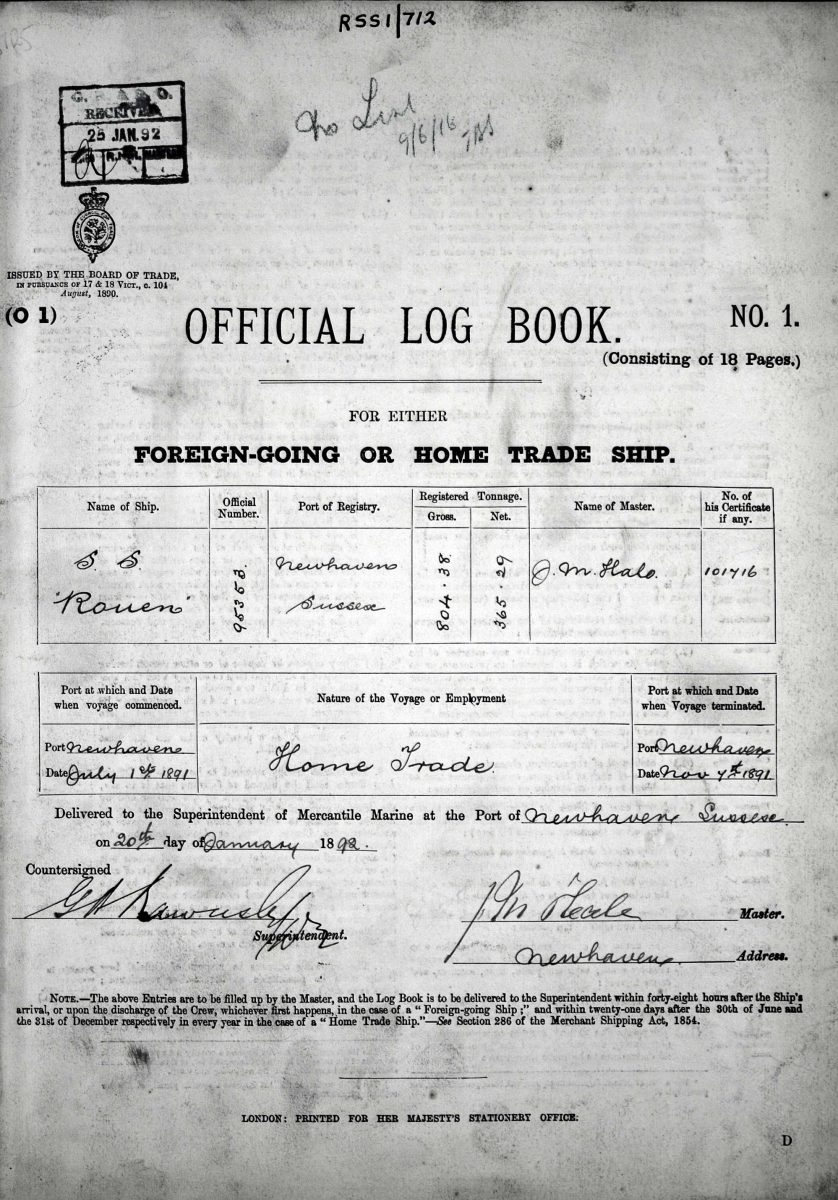
Official log book for the SS Rouen of Newhaven
This book is not the ship’s log proper but a record of certain categories of incident (eg deaths, disturbances on board) which were statutorily required to be reported to the Registrar General of Shipping and Seamen. It includes a list of crew members with a report on their character and ability in seamanship.
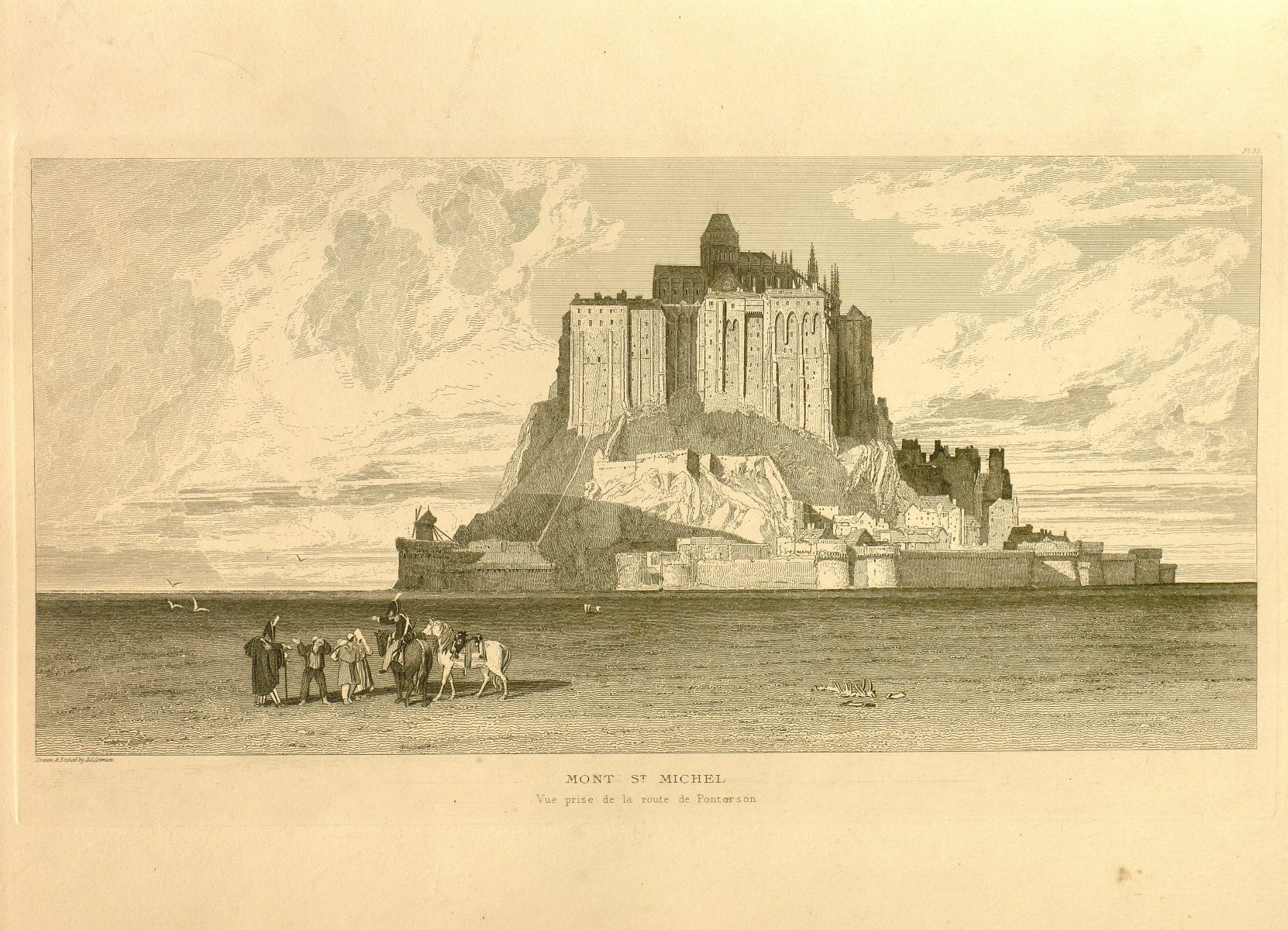
Architectural Antiquities of Normandy by John Sell Cotman – London, J. & A. Cornhill
Many British citizens started to explore their Anglo-Norman roots from the second half of the 18th century onwards. Normandy was a popular destination for artists: painters like Turner, photographers like Tenison, but also engravers who reproduced their creations.
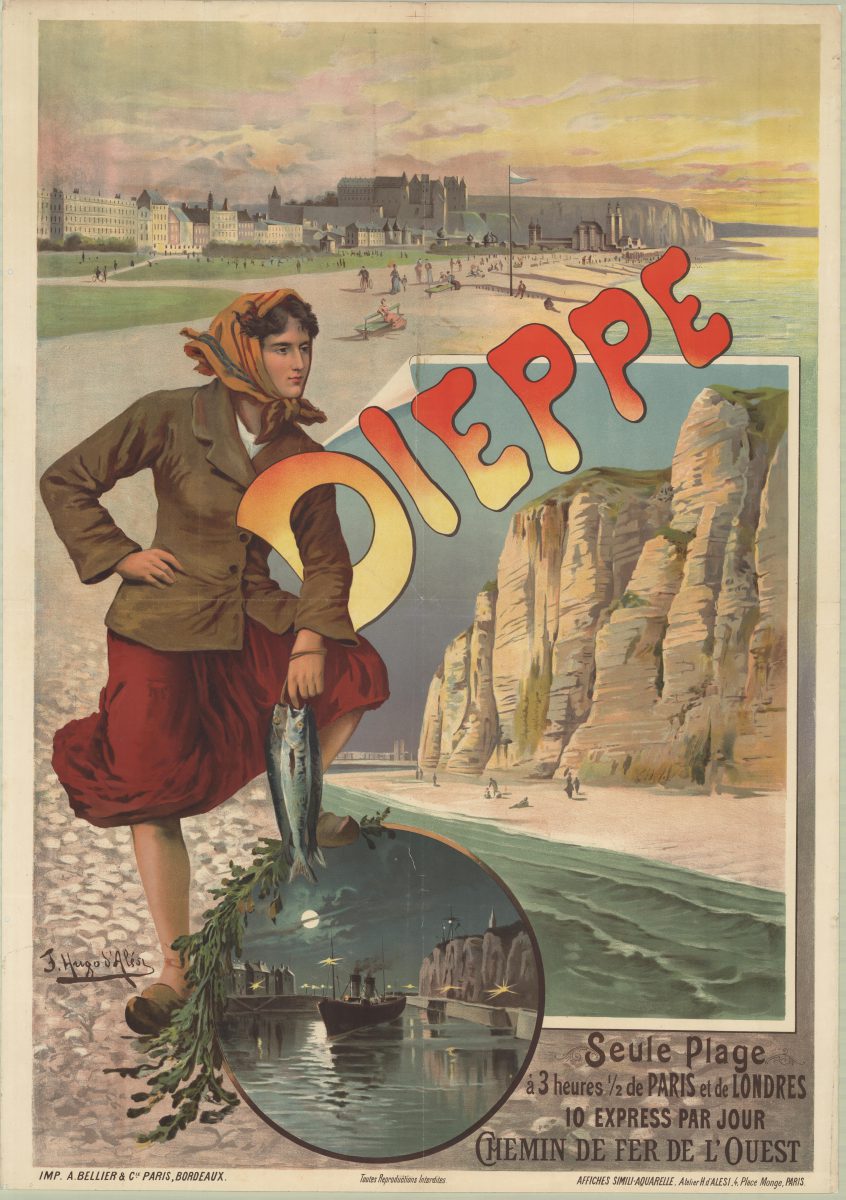
Dieppe, posters issued by the Western Railways
Shortly before 1900, new printing processes gave rise to large advertising poster format. This support, among others, allows railway companies to promote tourist sites served by rail.
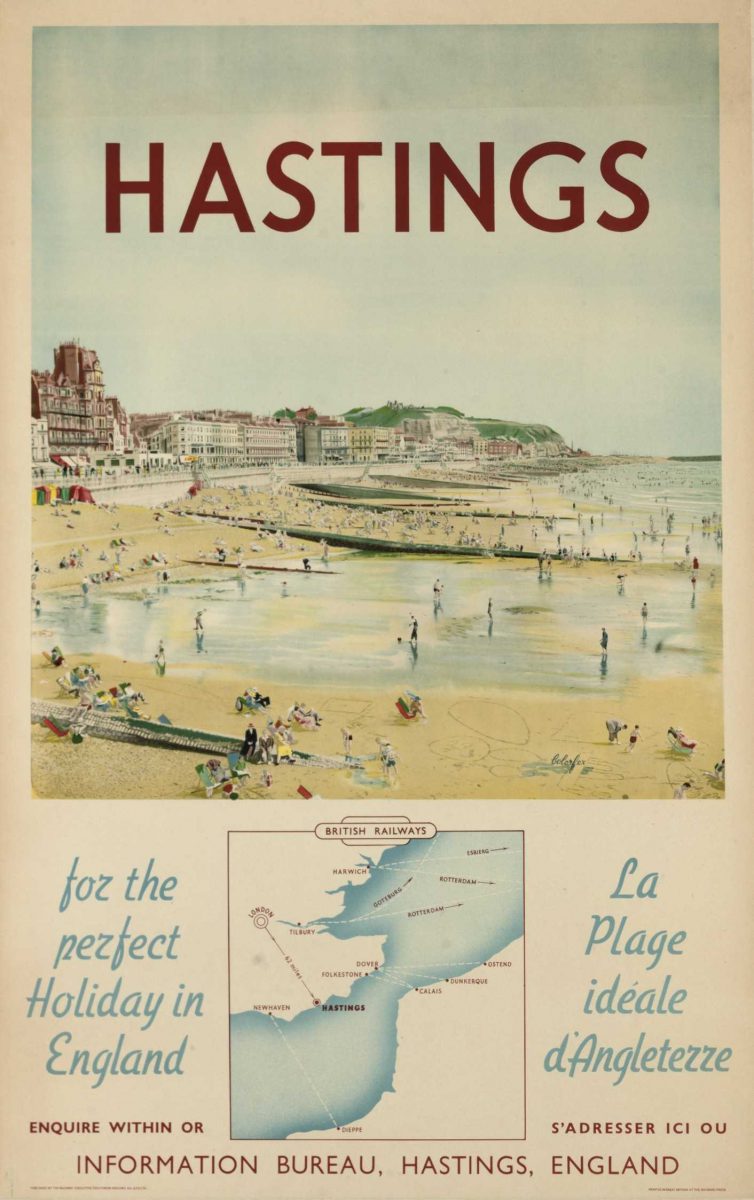
Hastings, for the perfect holiday in England, poster published by British Railways
Poster advertising Hastings to English and French visitors showing ferry routes between the south coast and France. Artist unknown.
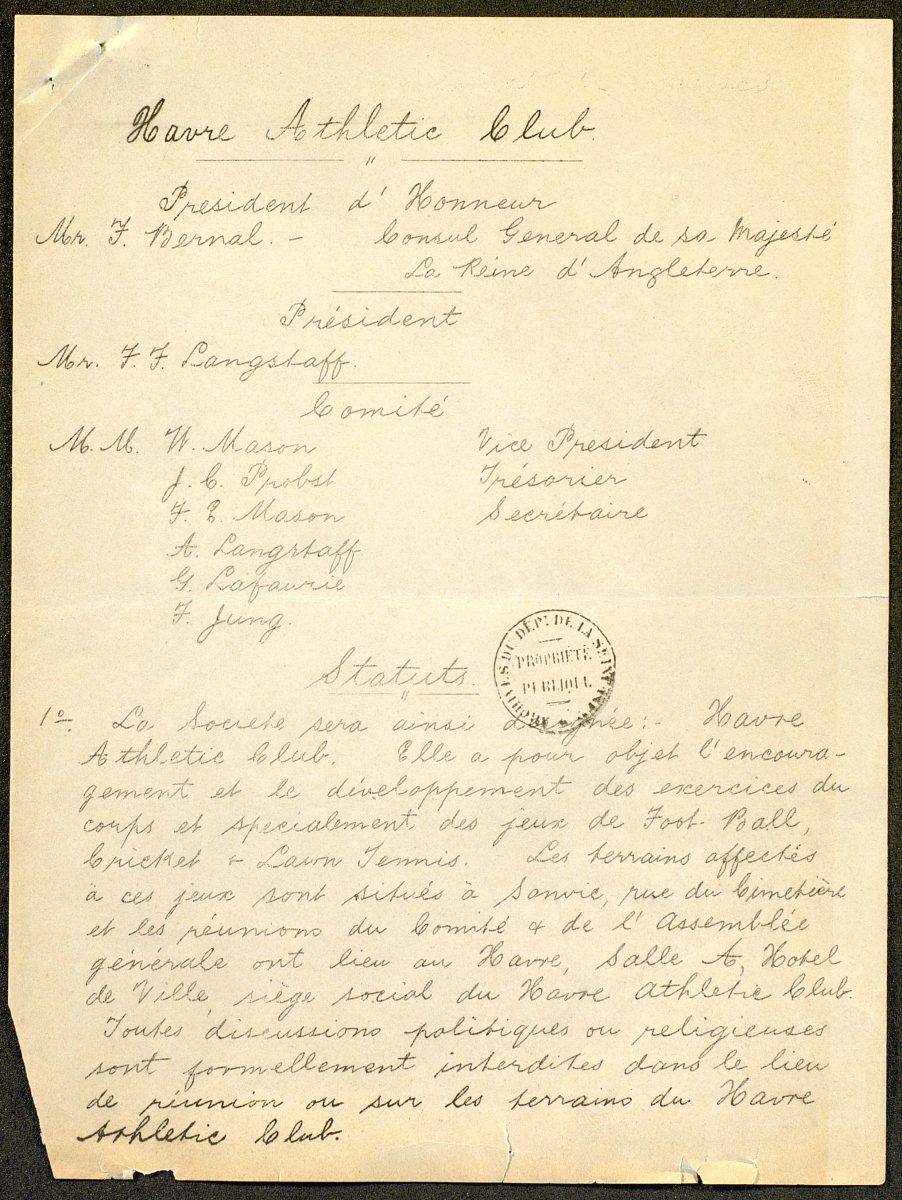
The first football club in France: bye-laws of the Le Havre Athletic Club
The Le Havre Football club was set up in 1872 by English Protestant expatriates working as traders or shop assistants in Le Havre. In 1891 the Le Havre Athletic Club adopted the colours of the English universities where the players had studied: the famous light blue of Cambridge and dark blue of Oxford.
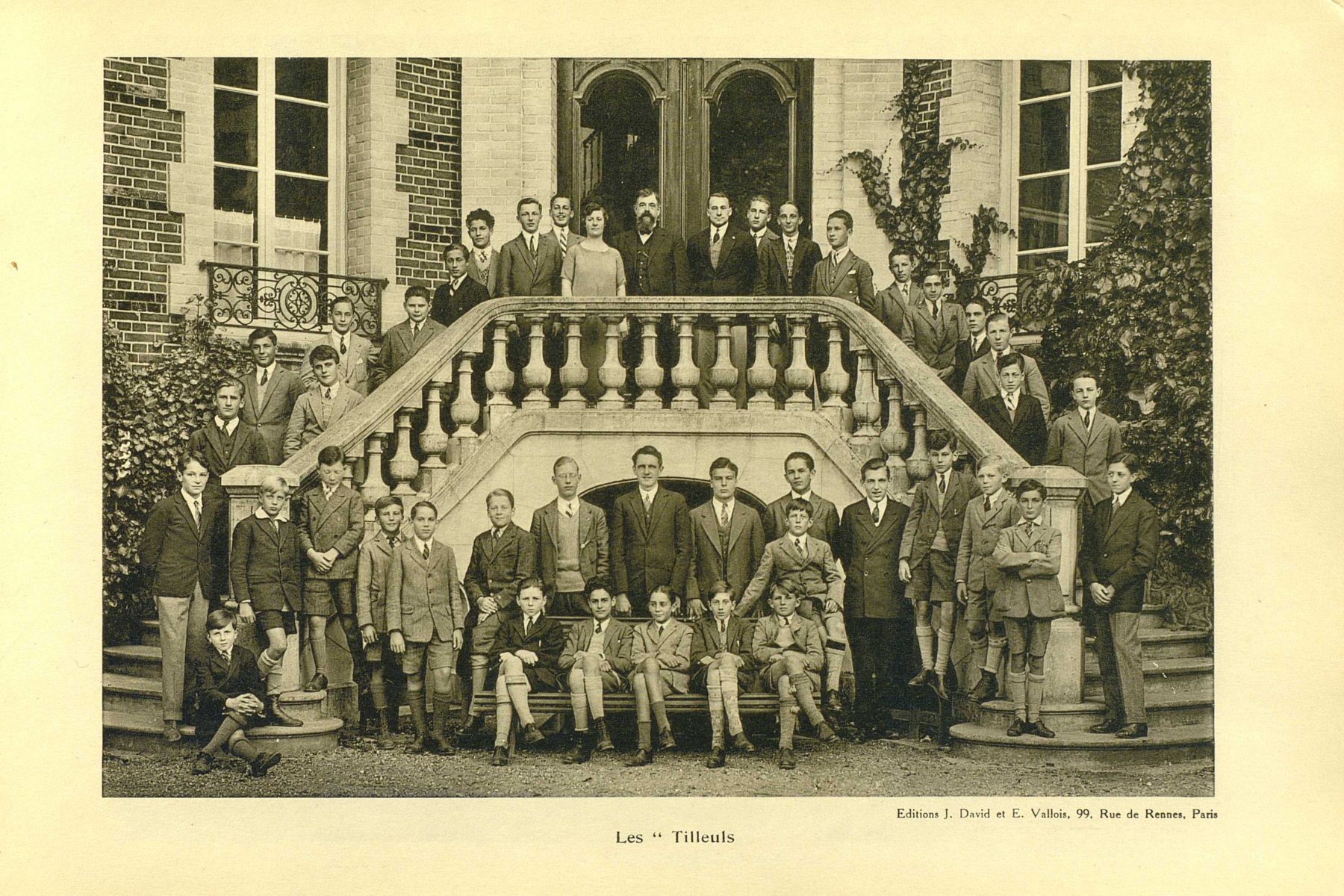
A public school in Mont-Cauvaire: photograph album
In the Collège de Normandie, modelled on Harrow school in England, physical education and games were compulsory. Pupils played football, real tennis and lacrosse, and did gymnastics and fencing.
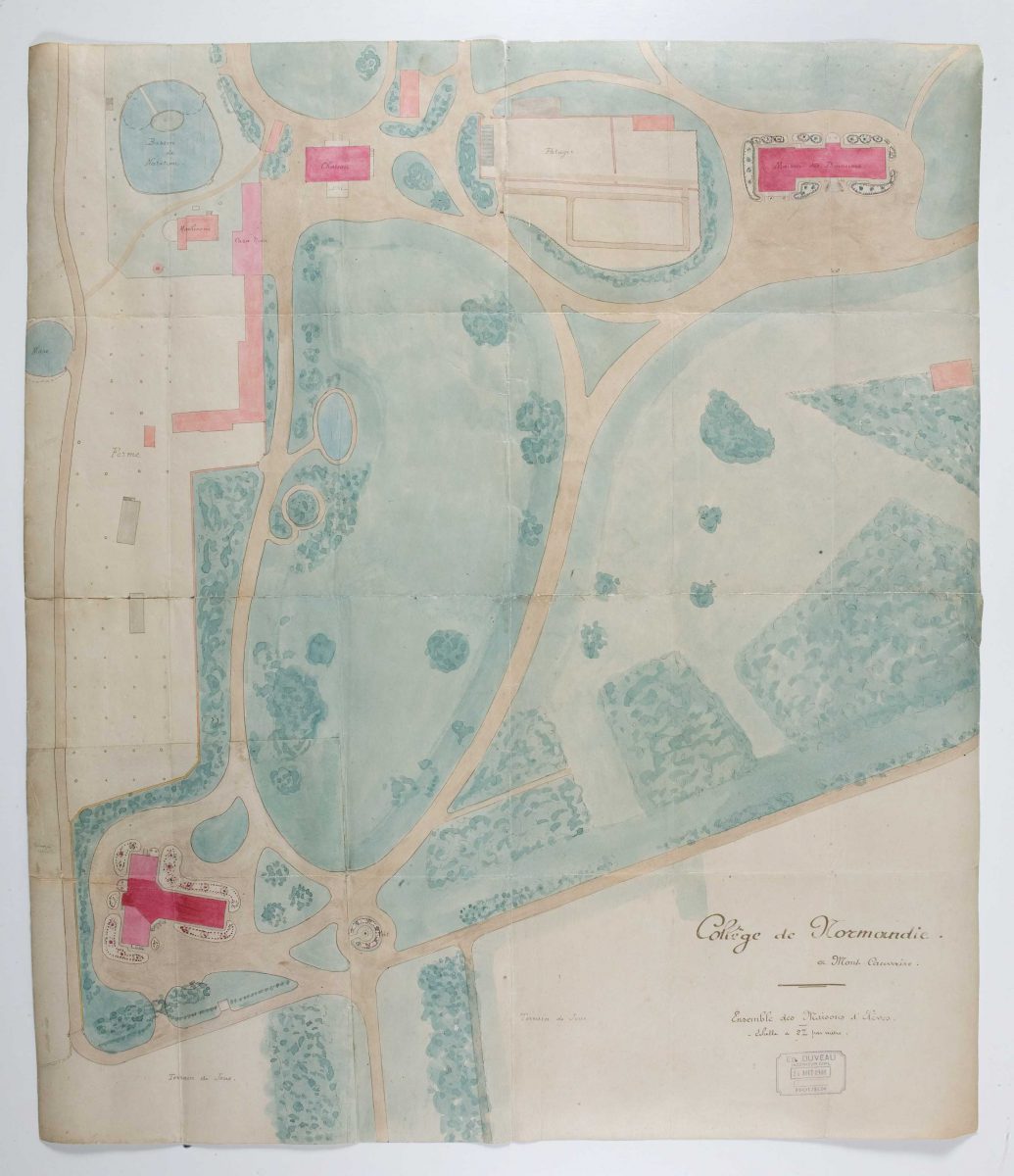
A public school in Mont-Cauvaire: plan of the pupils houses
The Collège de Normandie opened its doors in 1902. It was a private school for Catholic and Protestant pupils from the ages of 7 to 9 right through to the school-leaving examination. It was modelled on Harrow school in England. Modern languages were a prominent feature of the syllabus, and all pupils had to spend three months at a school in England.
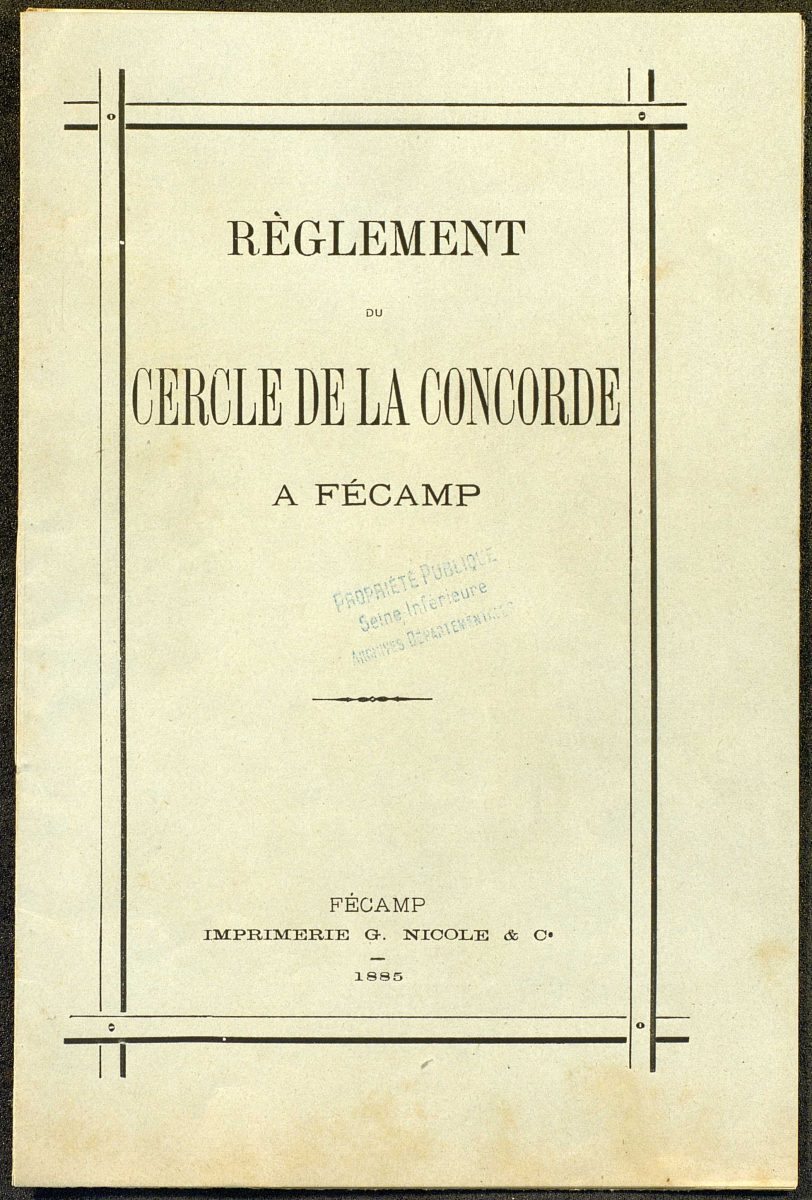
The fashion for English clubs: list of members of the Grand cercle du casino de Dieppe
Clubs became increasingly popular in Normandy, especially on the coast, in response to the English influence. The Cercle de la Concorde in Fécamp described its objective as offering residents somewhere “to talk about business and enjoy each other’s company”.

